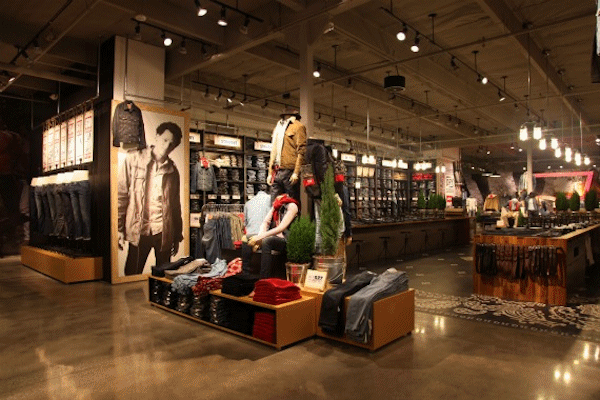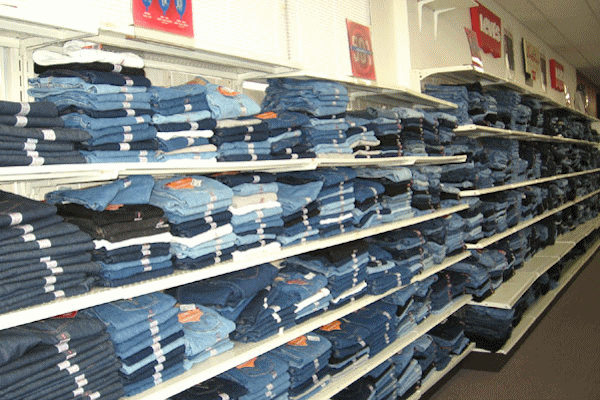By Mike Loughrin, CEO for Transformance Advisors
Four Big Challenges for Retail Supply Chain
As the final echelon in most supply chains, the retailer has an important and challenging role which impacts overall performance for every organization in the supply chain.
Four supply chain challenges facing many retailers are:
- Managing Inventory
- Employee Turnover
- Data Integrity
- Omni-Channel

One Fails and Everyone Fails
The manufacturing and logistics echelons of a supply chain could be running at 100%, but if…
- the store shelf is empty, or
- the consumer cannot find someone to help, or
- the product is mislabeled, or
- shopping are returns are not convenient,
…then the entire retail supply chain fails and there is no sale.
The balance of this article will explore each of the four major supply chain challenges which impact the final objective of making a sale to the consumer.

1. Managing Inventory
One of the greatest challenges for retailers is managing inventory.
Many retailers have hundreds or thousands of locations and carry thousands of items at each location.
Three specific issues getting a lot of attention are:
- Out of Stock
- Inventory Shrinkage
- Out of Date

Out of Stock
Retail “Out of Stock” is defined as “when an item is unavailable for sale, as intended, at a store.” This is further clarified as:
- Store level out of stock is when there is no inventory available at a specific store
- Shelf level out of stock is when there is inventory in the store, but the item is not on a shelf designated for the item
The table at the right provides data for an example of shelf level out of stock.
Assessing the data in the table, we see there is plenty of inventory scattered across the entire supply chain.
However, in the store, there are 8 shelves which have been designated for the chocolate peanut butter cups. Of these 8 possible locations, 3 locations have zero inventory available. This works out to 37.5% shelf level out of stock.
The large inventory at the supplier’s warehouse, the smaller amounts that are intransit or sitting in the distribution center, and the back storage room are not on a shelf. Thus, most of the inventory is out of reach of the consumer.
One study estimates that retail store level out of stock runs about 8.3% for consumer packaged goods. The number is undoubtedly much higher for retail shelf level out of stock.
Retail out of stock is estimated to cost retailers about 4.0% of their total annual sales.


“Everyday, we see customers leaving stores disappointed and empty-handed because they could not find the items they were looking for.”
– Patrick Looby, Retail Industry Executive
Inventory Shrinkage
Retail “Inventory Shrinkage” is defined as “loss of inventory through theft or error.”
The largest factors for inventory shrinkage are theft by employees and shoplifting by consumers.
The chart on the right displays the findings from one study.
Employee theft is the largest cause of inventory shrinkage, coming in at 44%.
Shoplifting is second at 34%.
The last three categories are all some type of “error,” with most of these errors caused by the retailer themselves. For example, a checkout clerk can miss the items at the bottom of a shopping cart.
Total inventory shrinkage for all retailers runs about 1.7% of their total annual sales.

Out of Date
Retail “Out of Date” is defined as “product that has reached the sell-by date established by the manufacturer or has become undesirable for the consumer due to loss of freshness or timeliness.”
Out of date is different than “expiration” or “do not use” dates which apply to the consumer.
Some typical causes for out of date items include:
- New product introductions which do not sell as predicted
- Over production of sandwiches, salads, and other items which must sell quickly
- Holiday products whereby the sales drop dramatically after a specific date
- Poor stock rotation in which newer items are sold before older product is depleted
- Fresh produce which spoils faster than anticipated
- Supplier shipping product with too little time remaining before out of date. This is known as “short dated” goods

2. Employee Turnover
The rate of employee turnover for retail establishments often runs at rates that would devastate organizations operating at upstream echelons.
Employee turnover is defined as the number of employees who have left in a given period of time divided by the average number of employees.
For example:
- You have 45 employees leave during the year
- You average 60 employees during the year
- Your turnover rate is 45 / 60 = 0.75 or 75%
One research study stated that retailers reported a median turnover rate of 67% in 2012 for part-time store workers. This was a 33% increase from the 51% rate reported for 2011.
Poor pay and a lack of benefits are two big drivers of high turnover for retailers.
The impact of employee turnover includes hiring costs, training costs, opportunity costs, staff morale, and customer satisfaction.

“If you look at retailers that invest in their people and pay more … they tend to have much more consistent and better sales trends.”
– Brian Yarbrough, Retail Industry Analyst for Edward Jones
3. Data Integrity
With thousands of items, the typical retailer has millions of opportunities for defective data to destroy customer satisfaction and damage the efficient flows of information across a supply chain. In addition, corrupt data can quickly stop the physical flow of products as all supply chain participants lose visibility into what is selling, what is available, and what is needed.
One study of over 140 large retailers reported that data integrity issues cost an average of $8.2 million every year.
Three specific issues that continue to cause pain and suffering are:
- Inventory Record Accuracy
- Master Data
- Transaction Data

Inventory Record Accuracy
One study at a large retailer revealed that 65% of their 375,000 inventory records were incorrect. That is an astonishing 243,750 errors.
Don’t just read that and move on.
We are talking about 243,750 errors!
Inventory record errors can be devastating in the case where the system thinks you have inventory on a shelf, when in fact, the shelf is empty. This is a potential out of stock situation that no one knows about and nothing is happening to correct the situation.

Master Data
Another significant data integrity issue for retailers is item master data. Some products can have over 100 attributes.
One large retailer, with over 1 million active Universal Product Codes (UPC), calculated that it cost $15 per item location to set up a new item in their system. With 7,000 stores, the cost of an error on a new item was $105,000. It was a very uncomfortable meeting between manufacturer and retailer when it turned out that the UPC bar code on the product did not match the specifications in the system.
GS1 US, initially known as the Uniform Product Code Council, has been developing standards since 1974. These standards help organizations identify, capture, and share supply chain information globally. A relatively new product data management standard is known as 1WorldSync.

Transaction Data
Beyond product master data, the massive flows of information in a supply chain contain transaction data. These transactions include purchase orders, POS information, inventory balances, advanced shipping notices, and many more.
Advanced shipping notices can be troublesome in that an error with this transaction will delay the receiving process at the retailer. This can increase labor costs at receiving and lead to problems with accounts receivables for the manufacturer. To compound the error, many retailers have calculated the cost of an error to be $100 or more. If a manufacturer sends product to 12 distribution centers, all with errors in the advanced shipping notice, then a charge back of $1,200 will soon be issued by the retailer.

4. Omni-Channel
Failure to get omni-channel correct can lead to colossal collapse of a retail operation. Think about some of the iconic retailers that are on gone or soon to be gone.
The big challenge is having multiple supply chains that must all work as one in terms of the customer experience.
These different supply chains must act like one in terms of:
- Buy at store and return to store
- Buy at one store and return to a different store
- Buy at store and return online
- Shop at store and buy online
- Shop online and buy at store
- Shop online and buy online
- Shop at online marketplace and buy from you
The above scenarios only take a few minutes to grasp. There are many more possibilities.
A number of scenarios can be downright messy.
Buying from one retailer and returning to another sounds unethical. But think about buying a new Mustang from a Ford dealer. If you move far away, then you clearly expect the local Ford dealer at your new home to take care of recalls, maintenance, and repairs.
So, why can’t you buy a pair of jeans from one retailer and return them to another?

Summary
There are four major retail supply chain challenges which impact the final objective of making a sale to the consumer.
Managing inventory, employee turnover, data integrity, and omni-channel customer expectations have unique characteristics for retailers that are different than the challenges faced by other echelons in the the supply chain.

Mike Loughrin is the CEO and Founder of Transformance Advisors. He also teaches for Louisiana State University Shreveport and is on the board of directors for the Association for Supply Chain Management Northern Colorado.
Mike brings exceptional experience in industry, consulting services, and education. Mike has helped organizations such as Levi Strauss, Warner Home Video, Lexmark, and Sweetheart Cup.
Keeping a commitment to a balanced life, Mike loves downhill skiing, bicycle rides, and hiking in the mountains. See one of his trails of the month at: Little Switzerland.
Quality Disaster at Pet Store
Collaboration Responsibilities
Bullwhip Effect: Still Snapping…
Challenges of Creating Alignment
Global Sourcing: Opportunity or Risk
Subscribe to our newsletter
References
Organizational Improvement Acronyms by Transformance Advisors
Organizational Improvement Definitions by Transformance Advisors

